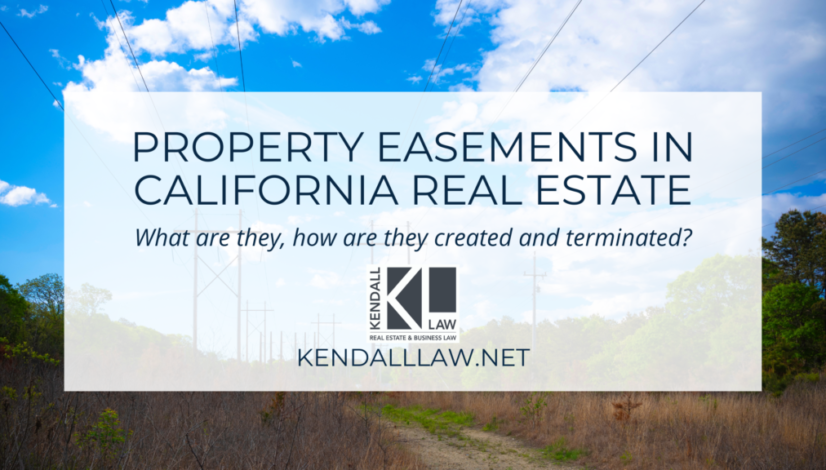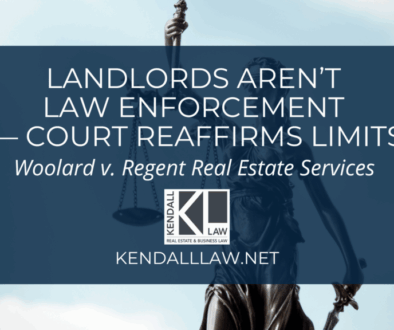Property Easements in California Real Estate
What are they, how are they created and terminated?
Easements are everywhere and often serve a practical purpose in our communities.
An easement is where a landowner gives another a limited right to use their land most often for reasonable access to things like roads, trails, parks or beaches. It is not an ownership right in the land, it is the mere right to use another’s land for limited purposes.
The most common easement is one that gives someone a right of way over another piece of property. There may be a city easement for power lines or an easement for getting in and out of a landlocked property. There are also easements for light, air or a view.
An easement can be created by an express grant, express reservation, implied grant or reservation, necessity, prescription, recorded covenant, dedication, condemnation, estoppel or court decision. The most common easements we deal with at Kendall Law are express, implied, necessity, prescription and court order.
- An express easement is one that is created by agreed upon documents which transfer the interest in real property to another. It can be by deed, will, agreement or recorded covenant.
- An implied easement arises from various circumstances when a trier of fact concludes that the parties intended to create an easement even though it was not expressly granted. An example of an implied easement is when one owner uses a dirt road over a neighbor’s property to access a lake for years. There is no express permission or grant of that right, but it is implied that there is an easement to access the lake by the conduct of the parties.
- A prescriptive easement is created when it is shown that the person seeking the easement has used the easement continuously for five years, possessed it in a manner that was open, notorious, and clearly visible to the owner of the burdened land, and hostile and adverse to the owner. It is a question of fact that has to be tried by a Court or jury. The use has to be such that it infringes on the owner’s rights to full use of that land and that the owner failed to do anything to stop or interfere with the use. If there is permission, one cannot obtain a prescriptive easement.
- An easement can also be created out of necessity. These easements arise in circumstances where a property is landlocked (has no access to a road). The owner must be able to get off the land to a road. However, this is only available when two lots were owned by the same owner at one time and then the two lots were sold to other people separate of each other creating one to be landlocked.
The team at Kendall has filed cases to obtain an easement by court order when parties cannot agree. These are judicial equitable easements involving the balance of the hardship of ordering an easement versus requiring the removal of an encroachment.
Just as easements can be created they can also be terminated. Easements can be terminated by release of the owner, merger of two properties negating the need for the easement, or abandonment.
If you have a situation involving easements on your property, please connect with Kendall Law to set up a consultation to understand your rights and obligations and set the best course of action. Kendall Law is here to help. Contact us or call (310) 619-4941.
Author: Eileen Kendall





